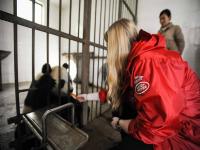

























Chengdu is the provincial capital of Sichuan Province in Southwest China. It is located on the edge of the Chengdu Plain which is known as the “Country of Heaven” (Tian Fu Zhi Guo). The agriculture in Chengdu really develop well, as a result, it is also called the “Land of Milk and Honey” due to this. One thing you must do in Chengdu is visiting the Chengdu Research Base of Giant Panda Breeding.
Chengdu is famed as “the home Town of Giant Panda” which attracts millions of tourists from inland and abroad. Moreover, Chengdu has a history of more than 2,000 years with numerous historical places of interests and relics.
You can experience the history of Chengdu can go to the Jinsha Site Museum, Sanxingdui Museum, Wuhou Memorial Temple and Wenshu Temple, or you can stroll in the Jinli Ancient Street and the Wide and Narrow Alley to relax yourself. Additionally, you’d better not miss the Sichuan Cuisine.
Leshan is a prefecture-level city located at the confluence of the Dadu and Min rivers in Sichuan Province.
It is located on the southwestern fringe of the Red Basin in southern Sichuan, about 120 km from Chengdu.
Leshan is a national historical and cultural city in China, belongs to the ancient Shu State in history, and has the reputation of "Begonia Scent Country".
Today, Leshan has listed in China's world natural and cultural heritage cities, owns three World Heritages: Leshan Giant Buddha, Mount Emei and Dongfeng Weir.
Located near the Qinghai-Tibet Plateau, Ya'an is a prefecture-level city in the western part of Sichuan province, China.
Ya'an has a long history, dating back to the pre-Qin era (Before 221 BC).
Ya'an is a historical and cultural city as well as an emerging tourist city in Sichuan Province, known as the "Rain City", the "Western Sichuan Throat", "Tibet Portal", and "National Corridor".
Two must-see sites in Ya’an are Shangli Old Town and Bifengxia Panda Base.
Dujiangyan is a county-level city under the jurisdiction of Chengdu, the capital city of Sichuan province. It is 48 km southeast of Chengdu. In the Neolithic Age, it was a region where ancient Shu people's ancestors lived and was one of the birthplaces of Ancient Shu State.
Being an international tourist city, Dujiangyan has 2 world heritage sites. One is Dujiangyan Irrigation System, which is an irrigation infrastructure built in 256 BC during the Warring States period of China by the State of Qin, the other is Mount Qingcheng, which is the birthplace of Chinese Taoism.
Some other famous attractions of Dujiangyan include: Guan Xian Ancient Town, Fulong Temple, Erwang Temple (Two Kings Temple), Lingyan Temple, Puzhao Temple, Jade Maiden Peak, Cuiyue Lake, Chaxi Valley, Lidui Park, Yulei Mountain Park, Anlan Cable Bridge, Insect Museum of West China, and Longxi-Hongkou National Natural Reserve Area etc.